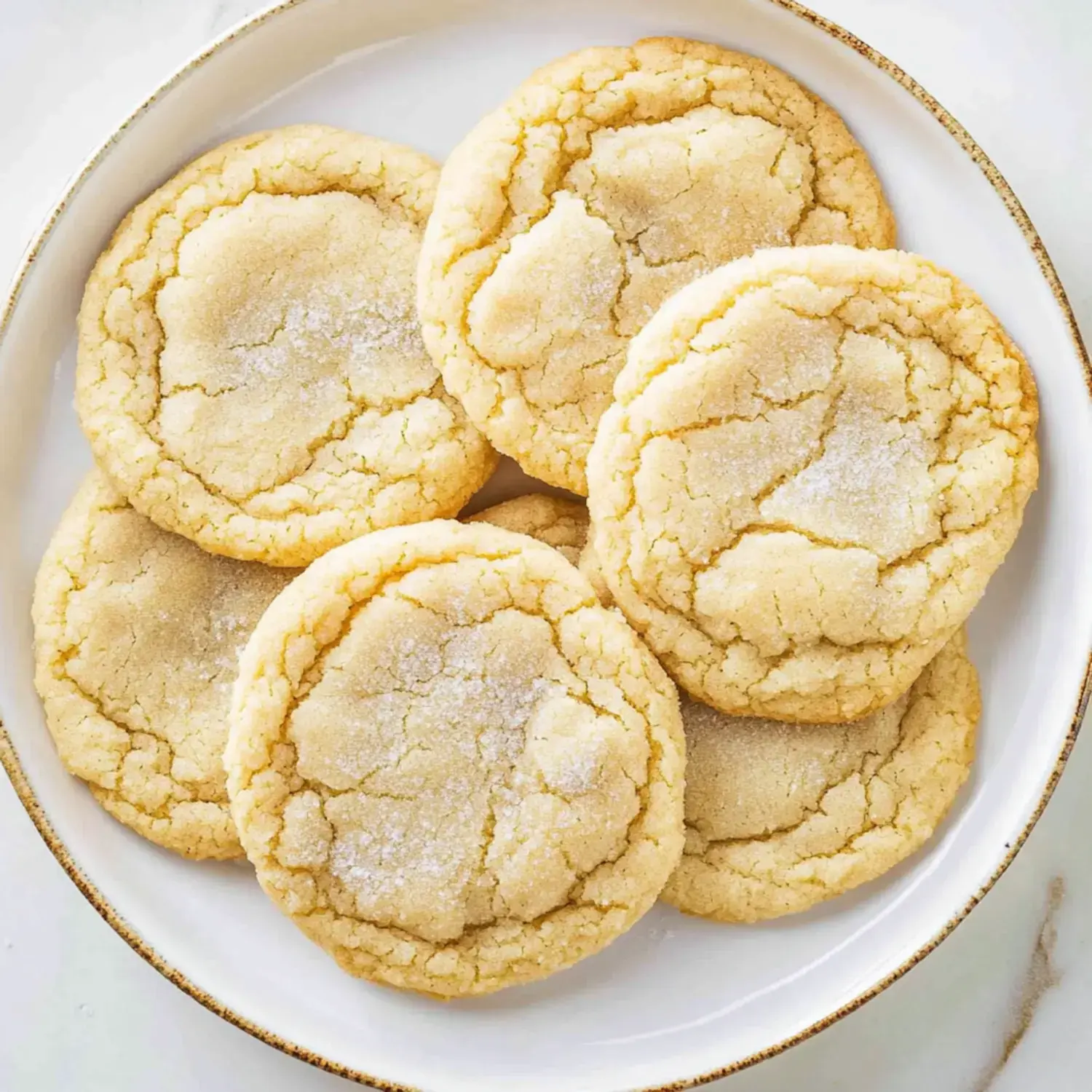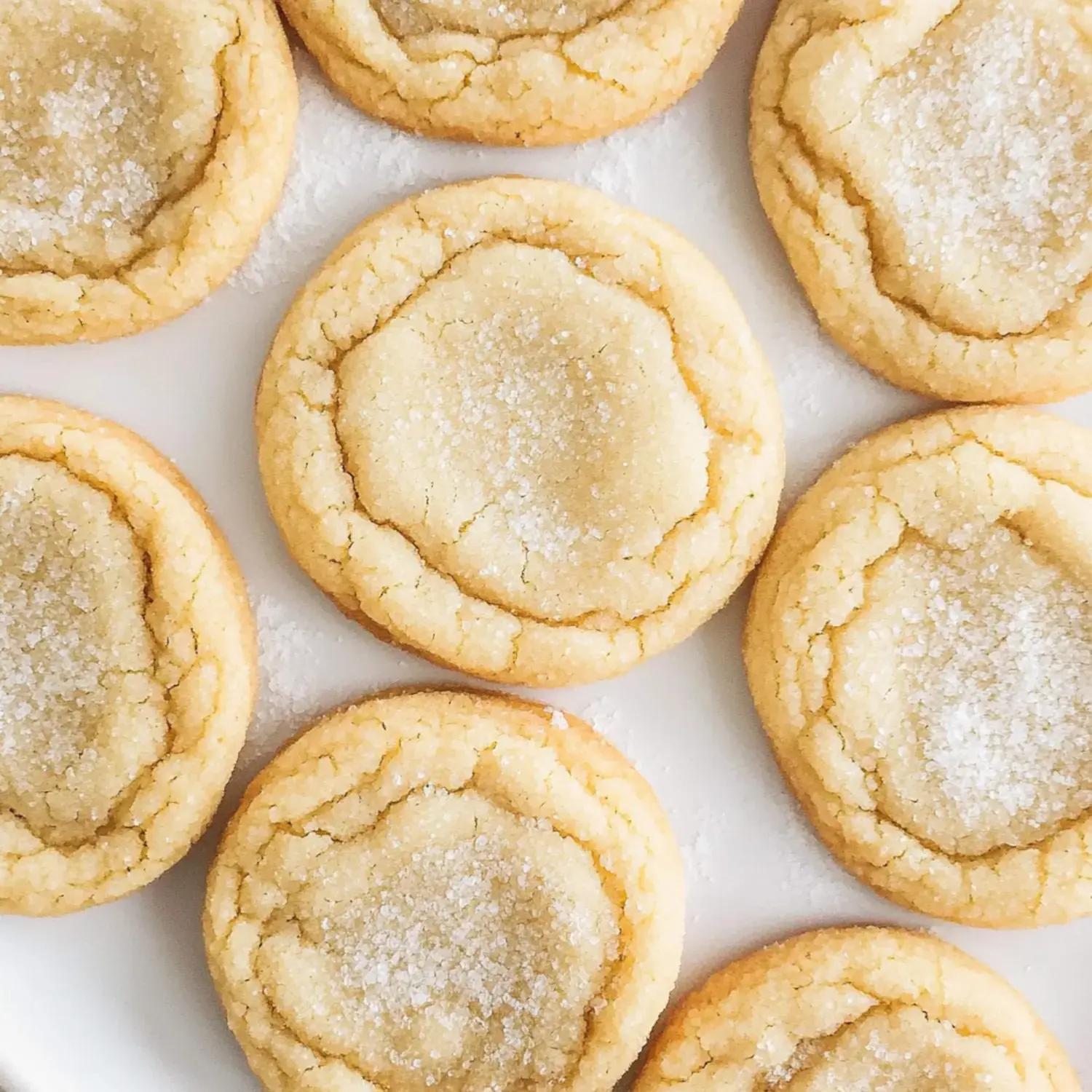 Pin it
Pin it
Soft and Chewy Sugar Cookies are my go-to treat when I crave the perfect balance of tenderness and chewiness. This recipe is quick, using simple ingredients often found in your kitchen. It’s no wonder they’ve become a favorite for anyone who’s tried them, thanks to weeks of testing to achieve perfection.
Why This Recipe Stands Out
These sugar cookies are easy to bake and require no chilling, making them ideal for any occasion. Whether you're preparing holiday cookie boxes or creating a base for ice cream sandwiches, this recipe offers versatility and indulgence. Featured in my cookbook, it guarantees bakery-quality cookies with minimal effort.
Essential Ingredients for Perfect Sugar Cookies
- All-purpose flour: Weigh accurately to prevent dense or overly dry cookies.
- Baking powder: Provides lift and balances the spread and browning.
- Fine sea salt: Enhances flavor by balancing sweetness.
- Unsalted butter: Use cool room-temperature butter to maintain shape and avoid excessive spreading.
- Granulated sugar: Adds sweetness and structure; do not reduce.
- Eggs: One whole egg and one yolk ensure richness and chewiness.
- Vanilla extract: Adds a classic flavor essential to sugar cookies.
Step-by-Step Instructions for Perfect Sugar Cookies
- Prepare Your Dough
- Combine butter and sugar until creamy. Gradually mix in eggs and vanilla, followed by the dry ingredients.
- Shape the Dough
- Measure 3 tablespoons per cookie and form dough balls for consistent size and perfect spread.
- Roll in Sugar
- Coat each dough ball in granulated sugar for a crisp exterior.
- Bake to Perfection
- Bake at 180°C (350°F) for 10-12 minutes. Remove when edges are golden, and centers look slightly underbaked.
How to Avoid Common Baking Issues
If your sugar cookies are spreading too much, check the butter’s temperature. It should be at a cool room temperature (67°F) to maintain the dough's structure. Similarly, fresh baking powder ensures proper lift and those beautiful crinkly tops. Avoid using nonstick cooking spray, as it leads to excessive browning and spread.
Achieving the Perfect Crinkly Tops
Rolling the dough balls in granulated sugar is essential for creating the signature cracks on the cookie surface. The sugar draws moisture out during baking, ensuring a crisp, textured top. Additionally, proper butter temperature and fresh baking powder contribute significantly to this visual appeal.
Baking Tools That Make a Difference
Using a light-colored aluminum baking sheet ensures even baking and prevents excessive browning. Avoid dark pans as they can cause uneven heat distribution. For lining, parchment paper is preferred over silicone mats to prevent spreading and maintain a clean finish.
Why a Cookie Scoop Is Essential
A cookie scoop saves time, ensures uniform sizes, and helps cookies bake evenly. Opt for a 3-tablespoon scoop for this recipe, as it creates perfectly shaped cookies with soft centers and crisp edges. Uniform dough balls also ensure a visually appealing presentation.
Chilling the Dough: Optional but Beneficial
While this recipe doesn’t require chilling, refrigerating the dough for 24-72 hours enhances the flavor and texture. For best results, wrap the dough in plastic wrap, chill, and allow it to soften slightly before baking. This extra step yields thicker, chewier cookies.
 Pin it
Pin it
Frequently Asked Questions
- → Why use cool room temperature butter?
- Cool room temperature butter is still slightly firm but spreadable. This consistency helps create the perfect cookie texture while preventing excessive spreading during baking.
- → When should I chill the dough?
- Chilling isn't required unless you live in a warm/humid climate or prefer thicker cookies. If chilling, form dough balls first, then chill to maintain even baking.
- → Why add an extra egg yolk?
- The extra egg yolk adds richness and helps create a chewier texture. The fat in the yolk also contributes to the cookies' softness and tender crumb.
- → Can I freeze these cookies?
- Yes, freeze baked cookies for up to 3 months or freeze shaped dough balls before rolling in sugar. Bake frozen dough directly from freezer, adding 1-2 minutes to bake time.
- → Why flatten cookies before baking?
- Flattening helps control the final thickness and ensures even baking. Using a measuring cup creates uniform thickness and a nice smooth top.
